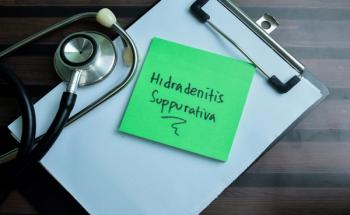
High Uric Acid Appears to Have Causal Role in PAH
Key Takeaways
- Hyperuricemia may causally contribute to PAH, positioning uric acid as a potential therapeutic target for treatment and prevention.
- Mendelian randomization analysis suggests a genetic-level causal link between serum UA levels and PAH.
A Mendelian analysis supports the idea that hyperuricemia may be an important risk factor for pulmonary arterial hypertension (PAH).
Hyperuricemia may play a causal role in the pathogenesis of
Jiang Li, PhD, of the Second Xiangya Hospital of China’s Central South University, explained along with colleagues that the underlying causes of PAH are not fully known, but are believed to involve a complex interplay of molecular and cellular mechanisms. Genetic factors seem to play a key role, they noted, and previous research has identified a number of genes that are associated with the disease.
UA is also affected by genetics; specifically, they noted, the synthesis and excretion of the acid can be affected by genetic regulation. Previous research has drawn links between UA levels and cardiovascular diseases. For instance,
Yet, Li and colleagues said it is not yet clear whether the relationship between hyperuricemia and PAH is causal.1 They therefore decided to use Mendelian randomization to evaluate the potential causal role of the UA. They used publicly available data sets, including genome-wide association study data and data sets related to genetic PAH risk, to build their models. Their subsequent analysis suggested that the link between serum UA levels and PAH was indeed causal at the genetic level.
“Our study further validates previous observational findings indicating elevated UA levels in most PAH patients,” Li and colleagues wrote. “Moreover, it establishes UA as a risk for PAH, with elevated levels associated with an increased relative risk of developing the condition, providing supporting evidence for the direct pathogenic role of UA in PAH pathophysiology.”
The authors cited 3 hypotheses for the apparent link. One possibility is that hyperuricemia leads to endothelial dysfunction. Another is that it stimulates smooth muscle cell proliferation by elevating levels of growth factors and triggering inflammatory responses, they said. It is also possible that UA leads to PAH by enhancing angiotensin II expression, leading to elevated pulmonary arterial pressure and oxidative stress.
Li and colleagues said they used 2-sample Mendelian randomization to offset the potential for selection bias, and they said their use of diverse UA databases helped to validate their findings. Still, they noted some limitations to their research. For one, the databases they used were based on European cohorts, and they said it is possible their findings are not applicable to other populations. They also did not adjust for the potential influence of factors such as age, gender, and environment, all of which might affect UA levels.
Even with those cautionary statements, though, the investigators said their findings have “profound” clinical implications for the screening and treatment of PAH. They noted that the 5-year survival rate for PAH remains below 60%, highlighting the need for early diagnosis and management of risk factors.
The fact that UA appears to play a causal role in the development of PAH suggests that it is necessary to perform targeted screening of people with hyperuricemia. At the same time, they said UA may be a promising therapeutic target for future PAH therapies.
“Such interventions could include exploring new pharmacological agents or optimizing existing therapies to better manage UA levels and potentially improve clinical outcomes in PAH,” they wrote.
Li and colleagues said future studies should also look at how UA elevation affects endothelial dysfunction and vascular remodeling specifically.
References
- Tan Y, Chen Y, Wang T, Li J. Serum uric acid and pulmonary arterial hypertension: A two-sample Mendelian randomization study. Heart Lung. 2024;68:337-341. doi:10.1016/j.hrtlng.2024.08.018
- Wang X, Hou Y, Wang X, et al. Relationship between serum uric acid levels and different types of atrial fibrillation: An updated meta-analysis. Nutr Metab Cardiovasc Dis. 2021;31(10):2756-2765. doi:10.1016/j.numecd.2021.05.034
- Watanabe T, Ishikawa M, Abe K, et al. Increased Lung Uric Acid Deteriorates Pulmonary Arterial Hypertension. J Am Heart Assoc. 2021;10(23):e022712. doi:10.1161/JAHA.121.022712
Newsletter
Stay ahead of policy, cost, and value—subscribe to AJMC for expert insights at the intersection of clinical care and health economics.








































